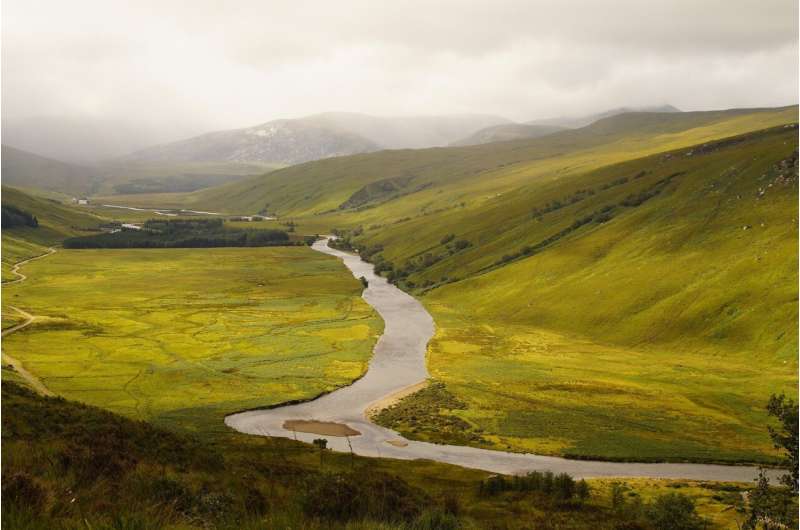Credit: Pixabay/CC0 Public Domain
Hillslopes are essential landscape features. They physically tie ridges to valleys and link terrestrial and aquatic ecosystems through sediment, water, and nutrients. Understanding how hillslopes interact is critical to understanding how landscapes will adapt in the face of climate change and other human-driven stressors.
Hillslopes are shaped primarily by two forces: tectonics and climate. Tectonic drivers, like uplift, define steepness and concavity. Climate dictates precipitation and establishes the relationship between a hillslope and coupled stream channels.
In a new study published in Geophysical Research Letters, Husic and Michalek parse the tectonic and climatic controls on hillslope structure and connectivity. They aimed to understand how hillslope connectedness affects the occurrence of floods, landslides, and wetlands. Using digital elevation model inputs with 10-, 30-, and 90-meter resolution, the authors applied a calculation called the index of connectivity (IC) to the continental United States. The index calculates the strength of linkages between a topographic point and a downstream water body, like a stream or lake.
The IC outputs resulted in 75 billion hillslope points spanning the United States. The researchers referenced the modeling outputs against publicly available topography, earthquake, and weather data to determine which variable best explained hillslope linkages. Then, they assessed the influence of hillslope linkages on the occurrence of landslides, floods, and wetlands.
The results showed that hillslope connectivity varies greatly by location. Across terrains, however, tectonics emerged as the first-order control on connectivity and climate was a lesser influence. The authors found that highly connected hillslopes are more susceptible to landslides, whereas poorly associated hillslopes feature greater wetland density. River steepness was the most prominent variable defining the relationship between tectonics and hillslope connectivity.
The authors created a public-facing website to promote their work and translate the results into usable tools for land managers.
More information: Admin Husic et al, Structural Hillslope Connectivity Is Driven by Tectonics More Than Climate and Modulates Hydrologic Extremes and Benefits, Geophysical Research Letters (2022). DOI: 10.1029/2022GL099898
Journal information: Geophysical Research Letters
Provided by American Geophysical Union
This story is republished courtesy of Eos, hosted by the American Geophysical Union. Read the original story here.
























